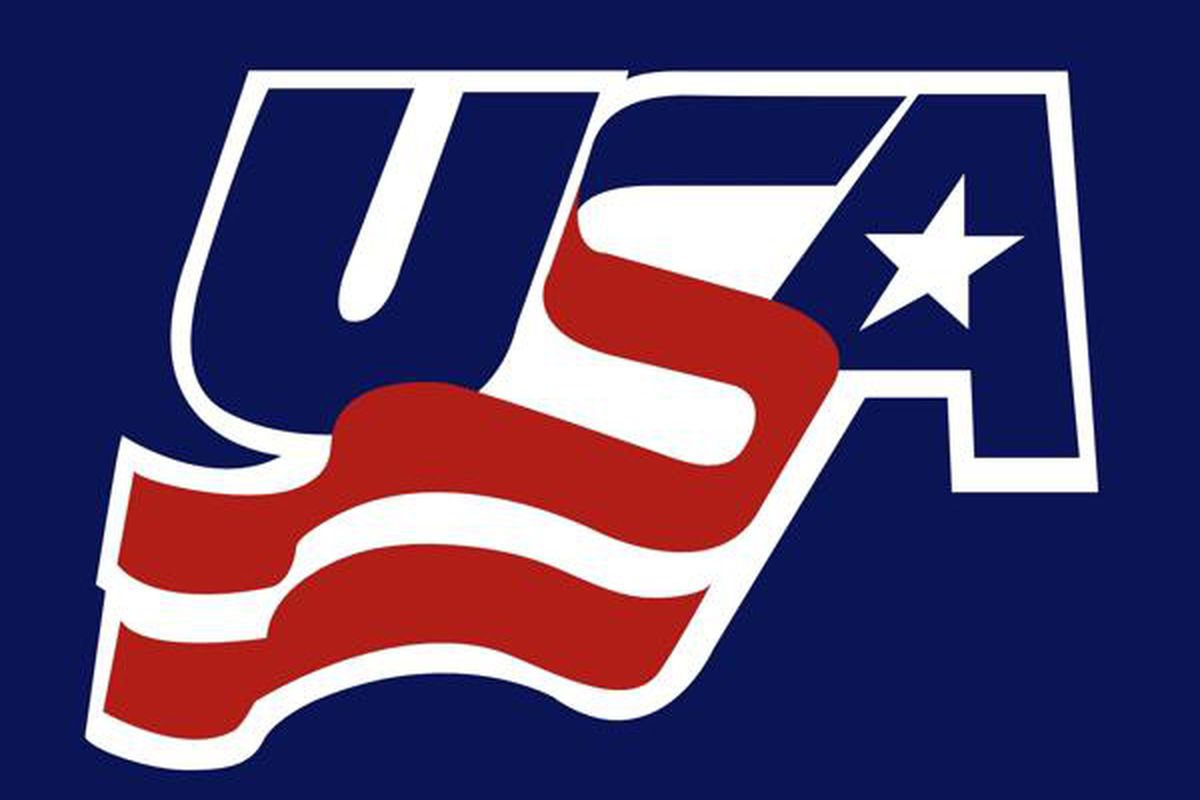by Jashvina Shah
After earning a bronze medal with USA hockey at the 2006 Olympics, Jamie Hagerman Phinney was sitting in her doctor’s office. Cross-training in the offseason caused an old pain her knee to resurface, and she didn’t know why.
Her doctor did an MRI on her knee. But he couldn’t find her ACL.
“What do you mean where is it,” Phinney said. “It didn’t just run away.”
The doctor showed her the MRI. “Jamie, it’s gone,” he said.
And in the image, Phinney could see the bottom of her ACL. And like her doctor had said, the rest was gone.
Her ACL had detached itself.
Phinney could still remember when it happened. It was the second-to-last game before the USA hockey roster would be named, and she felt a pain in her knee. But she also remembered Ben Smith, the future coach of the ’06 roster, telling her that she wouldn’t make the team because she wasn’t fast enough to compete on Olympic ice.
When Phinney had gotten off the phone with Smith that spring, just two and a half years before the Torino Olympics and just before her surgery to repair her ACL, she had to reevaluate her path. The conversation with Smith had hurt, but she knew there was still time to improve. She improved enough to earn Smith’s praise later, and made the initial roster.
“You know what [Jamie] like you played three-plus years without an ACL, you can do six months,” she told herself.
She already had the strength in her leg and she knew how to train and play without an ACL. So she convinced herself that nothing was wrong with her knee.
“People are like you such a bull. Such a bull in a china shop,” Phinney said. “And my husband, that’s all he calls me now. I sometimes decide to aim after I shoot and he laughs at me because that’s a lot of times what I do. I guess it worked. I don’t know. It makes for a pretty good story.”
***
Phinney began skating at two, a birthright more than a hobby. Her dad coached hockey at Deerfield at the time, and she spent so many days and so many steps at that rink. When she was three, her mom became director of admissions at Hotchkiss and her dad went to Salisbury. Her older sister played hockey at Hotchkiss and then at Dartmouth, while her grandfather even played for the Rangers for a little bit.
“It was just a game where I found myself being myself the most, growing up playing with boys. I just never thought that there was anything different or sort of uncertain about it,” Phinney said. “I always felt I was sort of my true self when I was on the ice and with my teammates and in the locker room. That was how hockey became my first love.”
While Phinney felt most at home with her teammates, there were outside influences telling her she didn’t belong.
She first realized that when she was around 10, piling into her car after a game. She asked her parents what it meant to be a specific word, and her mom freaked out. Phinney didn’t know what the word meant, but then she understood she wasn’t fully accepted in hockey just because she wore a ponytail.
She began tucking her ponytail underneath her helmet.
Phinney was still determined to play with boys, so she signed up for boy’s clinics. The family paid, signed her up under Jamie and showed up. The clinics had no choice but to accept her.
“I could walk away but then you’d get what you wanted and I don’t want you to get what you want because this is what I want,” Phinney said. “And just cause you’re some disgruntled dad, cause I’m taking your kid’s ice time and you’re realizing that a girl is better than your son, well great. … A lot of it is because my dad is so invested and such an advocate for me not being defined by my gender in any of my sports in any way. And he was such a huge supporter of [saying], ‘You’re awesome.’ When they say ‘Oh yeah you’re good,’ don’t let them follow up with ‘For a girl.’ Like you’re good, period.”
Proving that she belonged extended far past hockey. In public school, her only option for spring sports was softball. But she loved baseball and gained a special ordinance from the town to keep playing past little league.
Phinney continued with boys and girls hockey through eighth grade but switched exclusively to girls when she joined Deerfield, where she also played lacrosse. While Phinney entertained the idea of playing both sports in college, she settled on hockey — until her Harvard hockey coach Katie Stone encouraged her to play both to become a great athlete instead of just a great hockey player.
Which is how she tore her ACL the first time.
***
In the fall of her freshman year at Harvard, Phinney woke up early, went to lacrosse, went to class and went to hockey workouts.
It was three weeks for Phinney to get mono.
“I was like oh my gosh, Jamie this is probably not a good sign,” she said.
Stone advised her to back off lacrosse for a bit. But sophomore year of college Phinney played on the last day of fall ball. Normally an attack, she played at defense and was running down the field and tore her ACL.
Phinney still dreamed of playing for Harvard and USA hockey. But an ACL surgery would deny her that opportunity. It would also require her to miss a season at Harvard, as Ivy Leagues only grant medical redshirts to players who are not enrolled in school for the season in question.
Her doctor said playing without an ACL would be a possibility, as long as she limited her cross-training. She could bike and run, but not much else. And lacrosse was out of the question.
So Phinney decided not to have surgery and played the next three years of her college hockey career without an ACL.
“You’re probably thinking like I am such a knucklehead,” Phinney said. “At certain points, I was definitely in pain. I think though your mind takes over quite a bit and decides to readjust what is normal so that when I actually got my ACL fixed, it felt so weird. I wasn’t accustomed to that. But there were certain days where I was like man this is hard, should it be this hard? But the alternative was missing out and I wasn’t ready for that.”
It wasn’t until spring of her senior year, right after her phone call with Ben Smith, that she repaired her ACL. The tissues were taken from a tissue bank, and she was told her ACL would most likely tear again.
***
Because the tissues were not Phinney’s own tissue, her second ACL never got absorbed into her body. The second ACL surgery took tissue from her hamstring, so it did absorb into her body. She received the second surgery after the Olympics and moved to Lake Placid to train with other Olympians.
Phinney felt she could come back from an ACL tear once but not twice, so she filed her retirement. USA Hockey asked her to serve on the selection committee and she traveled to a world championship to evaluate players. But she realized she wasn’t ready to judge teammates in the same way she had worried about being judged as a player. She thanked USA Hockey for the opportunity and moved to D.C.
But she couldn’t shake her hockey addiction.
“My goal was to play. You get the bug of playing for USA and then you get the Olympic bug because when you’re there, you’re in the village, you’re with those athletes and this is the [way] I want to live my life,” Phinney said. “But living as an Olympian, back when I did it, you’re [not] making money, there’s very little coming your way. But at the same time, you’re living your dream.”
Just a year and a half before the Vancouver Winter Olympics and after just one and a half years of teaching, Phinney packed her bags and moved to Blaine, Minn., to train with the USA hockey team. She hired a new skating coach, but the game was getting too fast and she couldn’t keep up with the speed.
“I wasn’t ready to pull the plug on myself, so I needed them to pull the plug on me,” Phinney said. “Looking back at it, if I had been the one to walk away, I probably would always wonder what if. So when I went for that last tryout before the Vancouver Olympics and I got cut, at the time I was devastated. But it was what I needed.”
She retired from hockey for good but stayed in contact with the new general manager, Reagan Carey. Phinney joined USA Hockey’s executive committee where she represented men’s and women’s hockey on the U.S. athlete advisory council and served as a resource in the athlete village in Sochi. Phinney was also the athlete representative on the Olympic team committee for the 2018 Olympics, where she helped select the roster USA hockey that won gold.
Phinney served as a USA Hockey representative at an IIHF summit where the U.S., Canada, Finland and Sweden shared training and skating techniques with Russia, Japan and China.
“It was really just putting a lot of countries on the hot seat of demanding that certain requirements be made of funding, to just say like this is not OK for you guys to not be giving these same resources just because they’re women,” Phinney said.
Her term with the USA Hockey athlete advisory council ended two years ago and Phinney has been busy with her son and working at boarding schools. But she has stayed in touch with USA Hockey. She’ll serve on the coaching staff at the 66 Camp, comprised of the top U18 players in the country.
And, over a decade after she decided to play without an ACL, Phinney is working on a reunion with other USA Hockey women’s Olympic players.
“Ask me that when the doctor tells me I need a knee replacement,” Phinney said. “But I don’t know. I think we can always look back and say I probably could’ve taken the year off of college, but that’s just not me. I know myself and I know that I’m someone that puts her head down and probably, despite some pretty good outside judgment, will just go do something because I have this energy and passion to just go for it.
“From a biological kinesiology standpoint, like no probably wasn’t the smartest thing I could’ve done. But from being true to yourself and living out my mission of giving everything I have to every moment of my day, I don’t think I ever could’ve made it another choice.”



